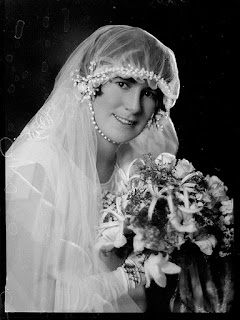In my last post, we explored some of today’s most popular wedding traditions. In this post, we’ll take a closer look at new practices that are emerging as traditions in their own right. After all, every tradition starts somewhere! For example, the tradition of wedding flowers began in ancient Rome, when brides carried herbs beneath their veils to ward off evil spirits and ensure fertility and fidelity. Similarly, ancient Greek brides used ivy to symbolize lasting love.

The Evolution of Wedding Flowers
Over time, flowers have become an essential part of weddings. Today, we have flower girls, bridal bouquets, pew decorations, corsages for the parents, reception arrangements, and more. Wedding flowers are big business, and each bloom often carries its own meaning. For instance, the rose is a perennial favorite: red for passion, white for purity, yellow for friendship and joy, and pink for admiration.
Modern couples, however, are redefining floral traditions. While classic white remains popular, brides increasingly embrace bold colors, single-flower arrangements, or monochromatic palettes. Bridesmaids’ bouquets no longer need to match the bridal bouquet, and thanks to global flower sourcing, seasonal restrictions no longer limit floral choices. A bride can now have stargazer lilies in a winter wedding, bringing fragrance and elegance year-round.
Other trends include incorporating dried flowers, pampas grass, or even succulents into bouquets and centerpieces, adding texture and a modern, sustainable twist.
Wedding Dances: First Dance and Family Dances
Traditionally, the bride and groom’s first dance, as well as the father-daughter or mother-son dances, were slow and sentimental. Today, couples are putting a modern spin on these moments. Some opt for choreographed routines to upbeat music—think salsa, tango, or even TikTok-inspired dance moves.
Family dances are also evolving. Instead of strictly dancing with their fathers, brides may choose to dance with mothers, stepfathers, siblings, or other significant people. Another fun twist is the “anniversary dance,” where all married couples join the dance floor, and couples are gradually eliminated until the longest-married couple remains.
Rethinking Bouquet and Garter Tosses
The classic bouquet toss is slowly being replaced by more meaningful alternatives. Many brides now gift their bouquet to a parent or a loved one as a sentimental keepsake rather than tossing it to single friends.
Similarly, the garter toss is evolving. Couples are creating kid-friendly alternatives, such as tossing a soft teddy bear or wrapped candies so younger guests can participate safely and enjoyably.
Personalized Touches
Personalized escort cards are becoming increasingly popular. Couples write a small thank-you note to each guest on their place card, combining a warm gesture with a practical function—and giving guests a keepsake to remember the day.
Signature Drinks
A modern wedding trend is offering a signature drink during cocktail hour. It’s a fun way to reflect the couple’s personality, and creative names add a playful touch. Non-alcoholic options are also trending, ensuring everyone can join in the fun.

Slideshow and Interactive Media
Couples are increasingly using slideshows to entertain guests. These often start with childhood photos and follow the couple’s journey to their engagement. Some modern couples even include short video clips or interactive elements, turning the slideshow into a storytelling experience rather than just a photo montage.
Modern Wedding Mantra: Anything Goes
The newest wedding “tradition” is that there are no strict rules. Couples are personalizing every element of their wedding, from flowers to dances, gifts, and décor. The focus is on creating a day that reflects their personalities and shared journey, rather than adhering strictly to tradition.
Whether you’re planning a classic ceremony or a completely unconventional celebration, today’s weddings are all about creativity, connection, and fun.
(updated Aug. 2025)
















